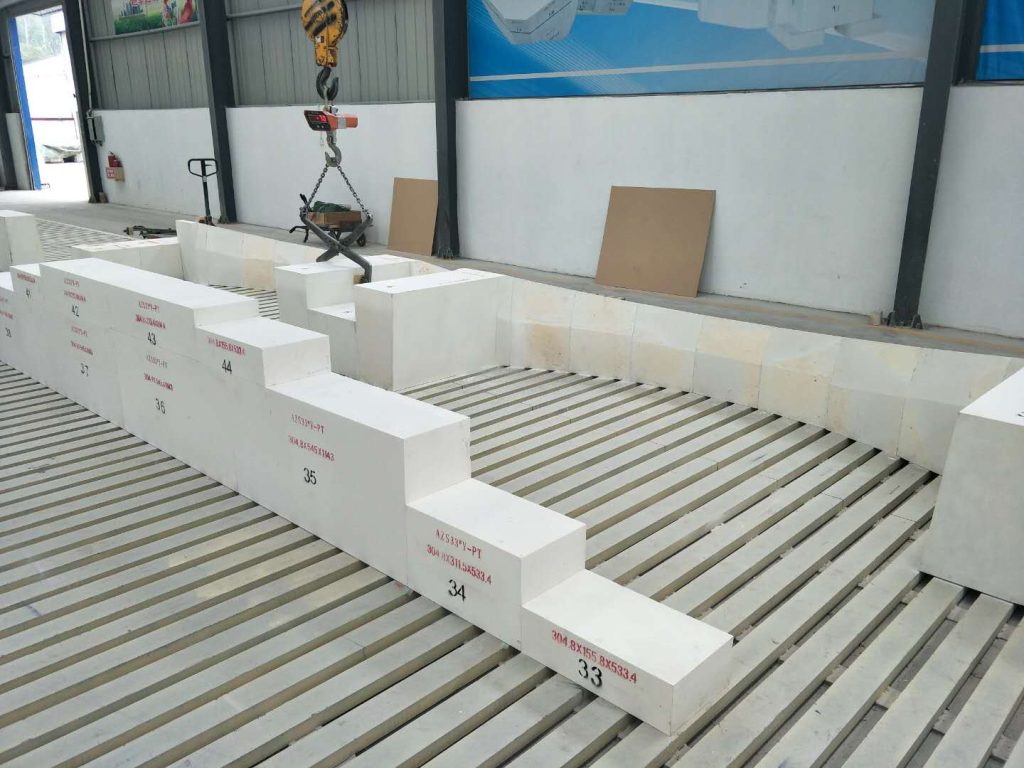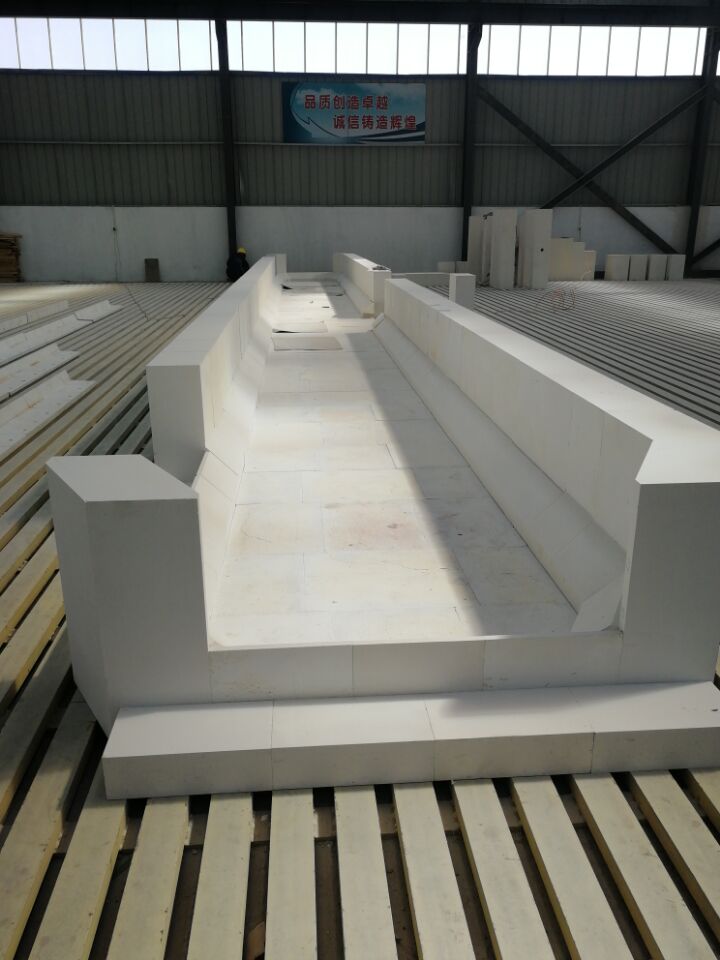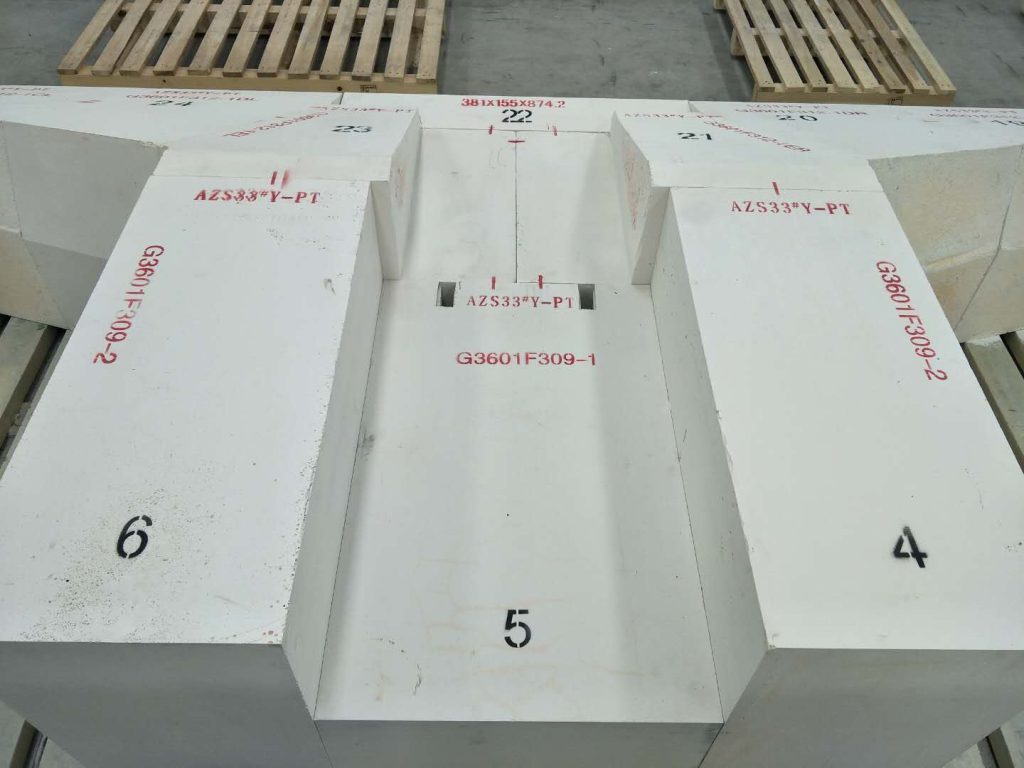Application of Fused Corundum Brick in Float Glass Melting Furnace
A glass melting furnace is a thermal equipment for melting glass made of refractory materials. The service efficiency and life of a glass melting furnace largely depend on the variety and quality of refractory materials. The
development of glass production technology depends to a large extent on the improvement of refractory manufacturing technology. Therefore, the reasonable selection and use of refractory materials is a very important
content in the design of glass melting furnaces. To do this, the following two points must be mastered, one is the characteristics and applicable parts of the selected refractory material, and the other is the service conditions
and corrosion mechanism of each part of the glass melting furnace.

Fused corundum bricks are melted alumina in an electric arc furnace and cast into a specified model of a specific shape, annealed and heat-preserved, and then processed to obtain the desired product. The general
production process is to use high-purity calcined alumina (above 95%) and a small amount of additives, put the ingredients into the electric arc furnace, and cast them into prefabricated molds after being melted at a high
temperature above 2300 ° C, and then keep them warm After annealing, it is taken out, and the taken-out blank becomes a finished product that meets the requirements after precise cold working, pre-assembly and
inspection.

1. Performance analysis of fused corundum bricks
1. 1 Fused αβ corundum brick
Fused αβ corundum bricks are composed of about 50% α-Al2 O 3 and β-Al 2 O 3 , and the two crystals are interlaced to form a very dense structure, which has excellent strong alkali corrosion resistance. The corrosion
resistance at high temperature (above 1350°C) is slightly worse than that of fused AZS bricks, but at temperatures below 1350°C, its corrosion resistance to molten glass is equivalent to that of fused AZS bricks. Because it
does not contain Fe2 O 3 , TiO 2 and other impurities, the matrix glass phase is very small, and foreign matter such as bubbles is less likely to occur when it contacts with molten glass, so that the matrix glass will not be
polluted.
Fused αβ corundum bricks are dense in crystallization and have excellent corrosion resistance to molten glass below 1350°C, so they are widely used in the working pool and beyond of glass melting furnaces, usually in
launders, lip bricks, gate bricks, etc. . Fused corundum bricks in the world are best made by Japan’s Toshiba.
1.2 Fused β corundum brick
Fused β-corundum bricks are composed of nearly 100% β-Al2 O 3 , and have a large plate-like β-Al 2 O 3 crystalline structure. Larger and less powerful. But on the other hand, it has good spalling resistance, especially it
shows extremely high corrosion resistance to strong alkali vapor, so it is used in the upper structure of glass melting furnace. However, when it is heated in an atmosphere with low alkali content, it will react with SiO 2 , and β
Al 2 O 3 will easily decompose and cause volume shrinkage to cause cracks and cracks, so it is used in places far away from the scattering of glass raw materials.
1.3 Physical and chemical properties of fused αβ and β corundum bricks
The chemical composition of fused α-β and β corundum bricks is mainly Al 2 O 3 , the difference is mainly in the crystal phase composition, and the difference in microstructure leads to the difference in physical and chemical
properties such as bulk density, thermal expansion coefficient, and compressive strength.

3. Conclusion
Based on the excellent properties of fused corundum bricks in terms of glass erosion resistance, foam resistance, and stone resistance, especially its unique crystal structure, it hardly pollutes molten glass. There are
important applications in clarification belt, cooling section, runner, small furnace and other parts.
